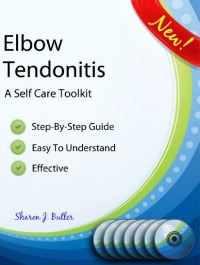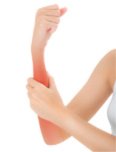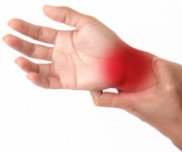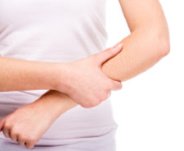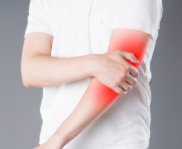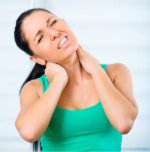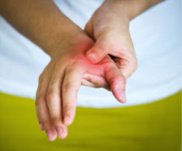Tendonitis Anatomy
When you understand tendonitis anatomy you can begin to figure out how the tendons become injured and what you can do about it.
Tendons are the structures that "attach" muscles to the bones they help to move. The "attachment" part of the equation is often misunderstood, however.
Tendons are made up of fascia that contains
- Collagen fibers
- White and yellow fibers
- Ground substance
Let's take a look at each one of these components.
Collagen Fibers
Tendons are part of the connective tissue matrix in the body and collagen is the main component of all connective tissue. At least half of the protein in the body is collagen. It is a fibrous material that is incredibly strong (it has more tensile strength than steel).
Collagen fibers are in their highest concentration in the bones, skin, tendons and the ligaments of the body due to its strength. Because tendons connect muscle to bone, collagen in the tendons provides the strength to lift the weight of an arm or leg as a muscle contracts.
White and Yellow Fibers
White and yellow fibers are the stretchy component of connective tissue. Because tendons don't stretch much, there are not many white or yellow fibers present in tendons. This is where the fallacy of "stretching" tendons is called into play. Tendons hardly stretch at all, so what you are actually stretching when you "stretch" a tendon is the muscle the tendon is part of. All the stretching takes place in the muscle.
Ground Substance
Ground substance is the fluid component of all connective tissue. Ground substance helps tissues slide and glide in the body. Because there is minimal sliding and gliding taking place in the tendons, the ground substance found there is minimal.
In order to maintain the health of the ground substance in the body, it is essential that you drink enough water to keep your tissues hydrated.
How Does This Anatomy Affect Tendonitis?
Whenever you create any motion with your body, as in swinging a tennis racket or a golf club, the muscles contract sending the force through the tendons to the bones. Tendons are the connecting link that makes the movement happen.
If the contractions of the muscles is constant enough and there is not enough chance for the muscle to lengthen out again, there is a constant pull being exerted on the tendons. Over time, inflammation and constant pulling becomes a source of strain leading to a tendonitis injury.
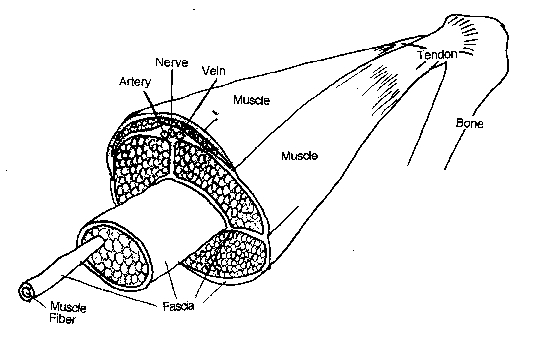
For our purposes in this section, the illustration that appears in the section on Fascia is repeated here because it is a great representation of how muscle, fascia and tendon are related.
As you can see, muscles are composed of muscle fibers that are each wrapped in a tight sheath of connective tissue known as fascia.
Bundles of muscle fibers are then wrapped with a slightly thicker layer of fascia, then bundles of bundles are similarly wrapped with fascia and then the total muscle is wrapped again with another layer of fascia.
As the muscle nears its end at a bone, the size and number of muscle fibers significantly decreases, narrowing the circumference of the muscle, but the fascia that has been wrapping those muscle fibers continues, becoming the tendon that attaches the muscle to bone.
The job of tendons is to transmit movement from the muscle to the bone. This results in motion through a joint, making the wrist, elbow or any other joint bend, flex, tilt or extend.
Tendons have very little ability to stretch and are strong straps that attach muscle to bone in the strongest way possible, having a tensile strength of over 1000 pounds per square inch which is stronger than steel. That’s a lot of pull on the bones they are attached to!
With a little bit of imagination, you can see how constant contraction of the muscles, which shortens the overall length of the muscles, creates a constant pull on the tendon as it attaches to bone.
When this strain becomes chronic, tendonitis is the result. Similarly, when that strain is reduced or eliminated, the source of strain disappears, the muscle relaxes and the tendon has the opportunity to heal from the effects of constant pulling.
To learn more about Tendonitis, visit the following sections:
Tendonitis Symptoms
Tendonitis Self Care
Click the block below that most closely matches your injury for more information and to find the Toolkit we offer to help you in your recovery.
